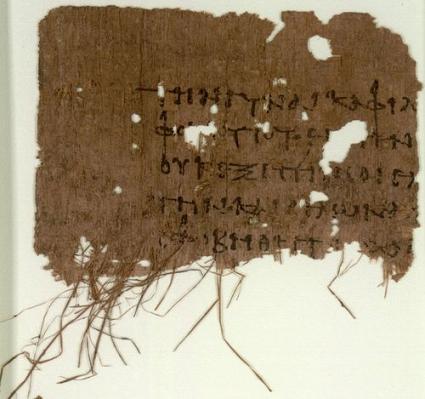| Change to Book/Chapter View |
|
|
|
Translation process is ongoing. For current status see details |
|
|

Papyrus 103 Discovered: Oxyrhynchus, Egypt Location: Oxford, England; Ashmolean Museum Contents: Matthew 13:55-56; 14:3-5 Notes: This papyrus is likely to be from the same manuscript as Papyrus 77.
Matthew 13 55 Isn’t this the carpenter’s son? Isn’t his mother called Mary, and his brothers James, Joses, Simon, and Judas? 56 Aren’t all of his sisters with us? Where then did this man get all of these things?” [..]
Matthew 14 3 For Herod had arrested John, and bound him, and put him in prison for the sake of Herodias, his brother Philip’s wife. 4 For John said to him, “It is not lawful for you to have her.” 5 When he would have put him to death, he feared the multitude, because they counted him as a prophet. |
How to read these pages: • The
translation to the left is based on the World English Bible. Words in regular
black font are words in the manuscript matching the Majority Text for that
passage. • Words
in italics cannot be seen in the manuscript, since the manuscript is
fragmentary. These words are supplied for readability by the World English
Bible translation. • Words
present in the manuscript but with some letters unreadable or missing are in blue
like this: blue. One Greek word often is
translated into multiple English words, and when this occurs, all the English
words are in blue. • Words
present in the manuscript but with spelling or trivial word order differences that do not affect the
meaning are in green like this: green. • If
the manuscript is different from the Majority Text, words in the Majority
Text that are missing from the text of the manuscript are marked through in red
like this: • If the manuscript is different from the Majority Text, words in the manuscript that are not in the Majority Text are underlined in red like this: new words.If the manuscript differs from the Majority Text yet matches another well-known text, this is noted in the footnotes.
|
